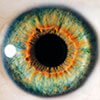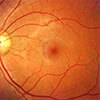Retina & Vitreous
Retina, Vitreous Send Signals to the Brain
The retina is a thin layer of tissue that covers the inside wall at the back of the eye. The retina acts like the film of a camera to capture light signals that are then transmitted via the optic nerve to the brain to create a vision.
The vitreous is a gel-like substance that fills the inside of the eye and is attached to the retina.
If you experience damage to your retina or vitreous, Northwest Eye Surgeons will work with your eye care physician and use state-of-the-art diagnostics to assess your condition.
Retina Anatomy
More About Retina & Vitreous
Retina Depends on Healthy Blood Circulation
When healthy, the center of the retina, or the macula, allows us to see detail clearly. The area surrounding the macula is the peripheral retina and enables us to see to the side (peripheral vision).
Damage to the retina is caused by disease, such as diabetes, high blood pressure, infection, injury or aging. Many blood vessels nourish the retina and when these leak or become obstructed, vision becomes blurry or is lost completely.
Vitreous conditions such as hemorrhage or degeneration can interfere with vision or cause retinal problems, such as retinal tear or detachment.
If you have retina or vitreous conditions, Northwest Eye Surgeons will work with your eye care physician and, using state-of-the-art diagnostics, determine the best course of treatment for your specific problem. We use fluorescein angiography, a test to look at blood circulation in the retina, as well as other testing to accurately assess your condition.
Our skilled surgeons and staff are experienced in treating all types of retina problems using a variety of laser and surgical methods, both outpatient and inpatient.
For more complex inpatient procedures, we work closely with Northwest Hospital and Valley Medical Center and their team of anesthesiologists, surgical staff, and technicians to ensure your procedure is safe and to maximize the odds of success.









